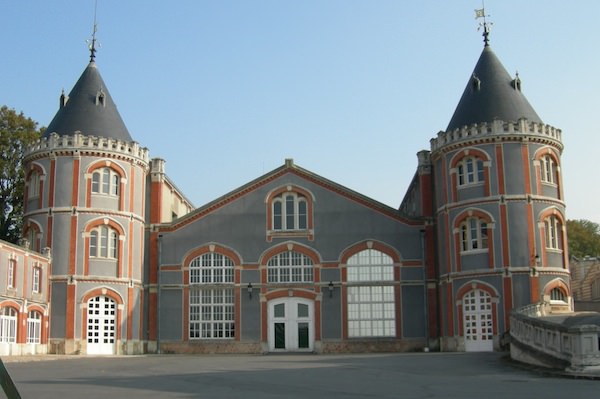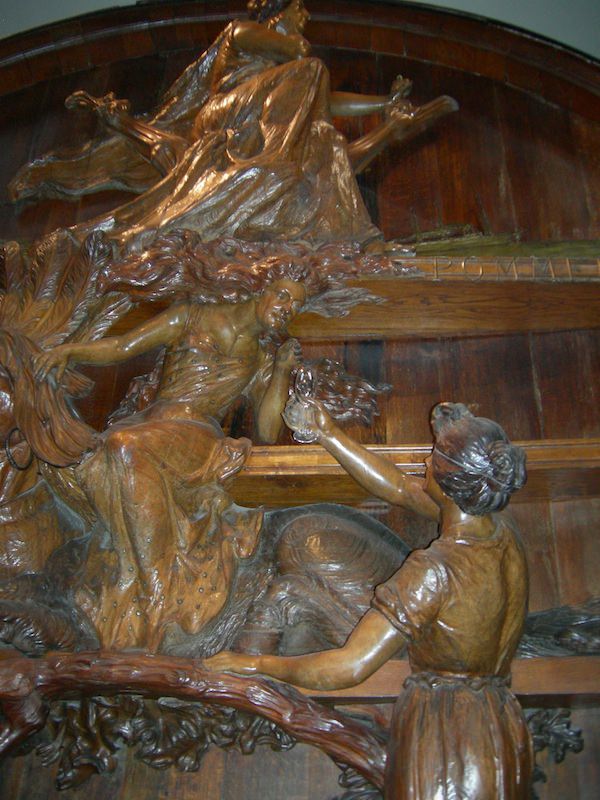Every time we hoist a flute of Champagne to our lips, we drink bubbly nectar that comes from only one place in the world—the Champagne region in France. Now only 90 minutes east of Paris by fast train, Champagne makes a marvelous overnight excursion.
But you’re better off spending several days in Champagne to do full justice to its miles of arid brown, vine stubble-covered chalky hills, and hundreds of Champagne houses. You’ll also see more immaculate, small French villages, Roman ruins, quaint cobblestone squares, towering cathedrals, and renaissance and gothic architecture than you’ll be able to remember.
Driving around Champagne brings home how deeply the area’s culture revolves around the vine; in its economy, traditions, literature and even religion. What is it about this region that has enabled it to have the world patent on champagne since the 18th century?
The answer lies in what the French call terroir—a complex interaction of soil, climate, and topography of the land, not to mention its deep-rooted tradition of champagne making. All make it unique. A rule dating back to 1927 restricts the land where champagne can be produced to 270 villages around Reims, a total of only 87,000 acres.
Your Champagne House tour starts in Reims, that started as the fortified Celtic town Durocorturum. Built by the longhaired Celtic clan Remi around the first century B.C., the Romans eventually occupied the town peacefully until the decline of their empire around 305 A.D. Reims is not only the capital of the Champagne, but a top food destination in France.
Reim’s Champagne House cellar tours are great fun, and you couldn’t visit Champagne without seeing where the famous bubbly comes from. Your cellar visit goes something like this: you assemble in the elegantly furnished Maison-Champagne, the stately chateau belonging to the family that owns the business. The enormous Pommery champagne house resembles a Disneyland set with two tall pointed turrets flanking a long central reception hall, all painted in gray with red trim.
Your guide gives an introduction to the champagne house and its history; sometimes including a short film showing how champagne is made.
Some of the houses have museums with displays and exhibits showing the stages of champagne production from vine to bottle. And you’ll hear how the economy of the region revolves completely around the vine. It’s export figures are staggering. The U.S., for example, imports 23.7 million bottles a year, and Britain, 32 million.
You’ll learn about the fascinating production side of champagne—it’s highly competitive. The ten largest houses only own 10% of the vineyards—
Pommery has a mere 120 acres of vineyards. The big houses buy their grapes directly from the 19,000 independent vintners in the region. Forty-six cooperatives make their own champagne brands.
Then, you’ll descend 20-30 meters down a long steep flight of stone stairs into the cellars, emerging into long, dimly lit tunnels, carved out of the chalk ground over the centuries. The cellars, called caves (pronounced “caaves” in French) wind for miles underneath the streets and houses of Reims or nearby Epernay. The Piper Heidsieck cellars are 10 miles long.
Then real fun starts, as you walk through a section of the caves with a guide, or trundle through on a glorified golf cart, seeing displays of how champagne is made and bottled as you pass by (literally) millions of bottles.
A guide explains the growing and bottling process, how each bottle is carefully turned on wooden racks—a quarter turn at a time—by experts who’ve often worked for the family all their lives, as their parents did before them.
Towards the end of the tour is the tasting (“degustation”)—and the houses are generous with their samples. Some tours host the tasting underground in low rustic brick and stone walled rooms with long wooden bars, others are above ground in plush red-velvet walled and thickly carpeted rooms.
As you linger to taste several varieties of the house specialties, you’ll learn the difference between a demi-sec, rose, reserve cru, cuvee, and ratafia. And the tasters rapidly ascend into that flushed and giggly feeling of wellbeing that only champagne can induce. Especially if this is your third or fourth maison visite.
All tours end in the showrooms with tempting arrays of souvenirs, books, wine tasting paraphernalia, wine glasses, champagne buckets, bottle-stoppers, and of course, cases of champagne. There are dozens of houses to visit in Reims including Piper-Heidsieck, Taittinger, Pommery, Mailly Grand Cru, Ruinart, and Veuve-Clicquot-Ponsardin.
It’ll take you 30 minutes to drive to Epernay from Reims through the vine-covered countryside. This town, much smaller than Reims, has a more authentic Champagne feel to it—it bustles with all businesses associated with the bubbly gold. Its ideal for walking around—you’ll be amazed at the number of champagne shops. Every second shop sells the fizzy liquid, and restaurants make up the rest. The food is excellent here, as you’d expect in a place with such wealth.
The biggest attraction in Epernay is the wide, regal Avenue de Champagne where the big label maisons are found. The magnificent stone and brick Chateaus of Moet and Chandon, Perrier Jouet, Mercier, de Castellane, Esterlin, and many others, line the avenue for a mile or so.
The cellar tours will easily take you all day. After a tour or two at Reims, followed by a tour or two at Epernay, you’ll have the general idea of what champagne houses are about. To keep things interesting, take the small “tourist train” tour through the streets of Epernay to learn its history and architecture.
Written by and photos by Roy Stevenson for EuropeUpClose.com
Roy Stevenson is a freelance travel writer and photographer based in Seattle, Washington. To view more of Roy’s travel articles go to www.Roy-Stevenson.com







VIOLA DERBEZ
Tuesday 23rd of September 2014
Hi Roy, I am traveling to the Champagne area in France with 14 friends and I will like to have your suggestion in which 2 or 3 cellars to Visit. I know that Moet&Chandon is close for 1 full year for restoration so this is not an option. also do you suggest doing the Hot Air Ballon trip? We will be 3 days only and want to get the best of Reims and its surroundings. Please reply Viola
Nichole
Wednesday 28th of March 2012
I can't get over how beautiful the buildings are.